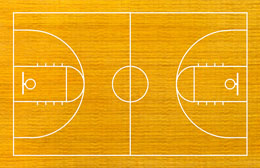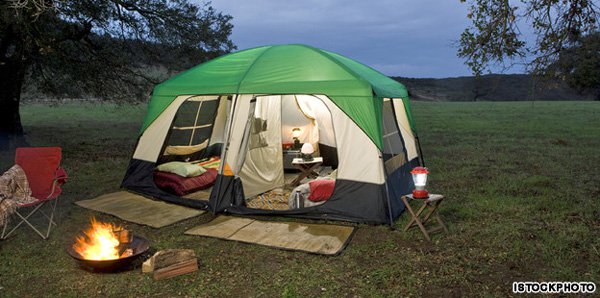RE: Texas Rig
Question
Greeting,
Thank you for taking time reviewing and answering my questions.
I am new to fishing; mostly fishing in lake.
The lake has bass, crap, etc.
Haven't catch any big or med fishes yet; mostly small bass.
I read a couple of rigs for fishing.
I am wondering would it be better to put another hook at the end of Texas Rig?
Will this work more efficient?
I tried many other baits and most of them are light weight or floater.
Do I need to put a sinker or a snap on?
I tried both, but w/o the sinker it seems can't swing too far.
Thanks again.
Lap
Answer
Hi Lap; To begin with an answer to your question about adding a hook to a Texas rig worm is NO. The properly rigged Texas rig is fine for catching bass if you follow a couple of basics. You will find that there is no agreement on just what to do when you feel a bass on your Texas rig worm. I will give you the basics of how I do it and not get into any arguments with people who do it differently.
Usually you know a bass has your worm if you feel a slight tap tap on your line or you see the line jump to one side or another or sometimes it is as simple as the line tightening up and the fish pulling your rod tip down. What I do is when I see the line move or jump to one side or feel the tap tap is to gently raise my rod tip to about the ten o:clock position and take up any slack in the line until I can feel the fish. Do not tighten it up enough to pull on the fish or he is likely to drop your lure. When you can feel the fish drop your rod to 8 o:clock take up the slack and set the hook.
The single hook will do fine if it is sharp. When rigging a Texas rig push the point of the hook through the head of the worm about 1/3 inch and push the worm onto the bend if it is a bent type worm hook. Next turn the hook around and bring it under the belly of the worm and push the point through the worm and then back it just a tiny bit so that the point of the hook is barely covered by the plastic. This will make the hook pretty weedless. Use as small a weight as possible to sink the worm.
I use a small snap without a swivel to connect lures to my line but ordinarily I do not put a sinker of any kind on a store bought lure except plastic worms, lizards etc. Some floaters work best when tied directly without a snap. This you learn by watching the lure with and without a snap to see which brings the best action according to what the lure is supposed to do. I use a snap on most of mine.
By "swing" do you mean cast the lure, when you say "can't swing too far"? If so I would need to know what kind of rod and reel you are using and the line size and lure weight and type of lure. All of these things affect the casting distance. For a beginner I would suggest an open face spinning reel and a rod of at least 6 1/2 or 7 feet with medium action. This will cover most general needs. It isn't necessary to spend a lot of money on such an outfit. You can get one at Wally World for around $35-$40. Buy good quality six or eight pound monofilament line. Don't mess with co-polymer lines etc. yet. You can do that after you get some experience. An outfit like this can cast a lure from about 1/4 oz to 3/4 oz with little difficulty and a cast of 40-50 feet is fine for most fishing. It isn't necessary to throw the lure into the next county to catch fish.
Try getting several different types of lures over the next year. Buy one a month or so if money is a question. Never pay more than $5 for a lure at your level. A $3.95 lure will catch bass if you use it right and a $25. one will not catch any if you don't handle it right. I have very few lures that cost more than $5 and I do catch fish pretty regularly. You need some floater lures. some that float and then dive a little ways under when you reel and some that stay on top and make some kind of commotion. You need a couple that float and then dive deep when reeled and you need a spinnerbait or two. One with a big Colorado blade at least as big as a quarter and another spinnerbait with a Long Willowleaf blade. Secondary blades are ok but not absolutely necessary. Then you need a few worms or lizards. At first I would suggest about three pkgs. of worms. Some should be dark with blue, black or purple in them while some should be lighter blues, greens or perhaps red. 6-7 inch worms will catch bass of all sizes. Later you will want to branch out and get more sizes and colors but two or three will get you started catching bass. One other type lure I would suggest is a lipless crankbait like the Rattletrap or one of the other brands. They all catch fish. For the most part you can start with a chrome/blue back 1/3 or 1/2 oz. Cast it as far as possible (it will cast far) and holding your rod at about 9:30 reel it in fast just tipping the tops of any weeds or if no weeds run it slow just hitting bottom now and then. If there is much bottom trash keep it above it and then stop it and let it drop into a tree top or bunch of weeds then hop it up and out using your rod to get it moving up and toward you. Often a bass will grab it as it stops and falls. I use this lure a lot and have caught a lot of good fish on it. Of course any fish is a good fish but I don't know how big a "good" one is where you live. Here it takes an 8 lb. fish to gain any notice but I consider any 3 lb or above a "good" fish. When I was in Minnesota years ago a 5 lb. fish was considered a "big" bass. It depends on where you live.
Well I hope I have given you some answers to your pretty general questions. If you have other questions on anything I have said or anything else relating to bass fishing give me a follow up question.
Thanks for calling on me to answer your question.
I am
Jack L. Gaither (JackfromSeminole)
Lake Seminole, Georgia
bass fishing! lures and rods!
Fresh water fishing for bass and peacocks


